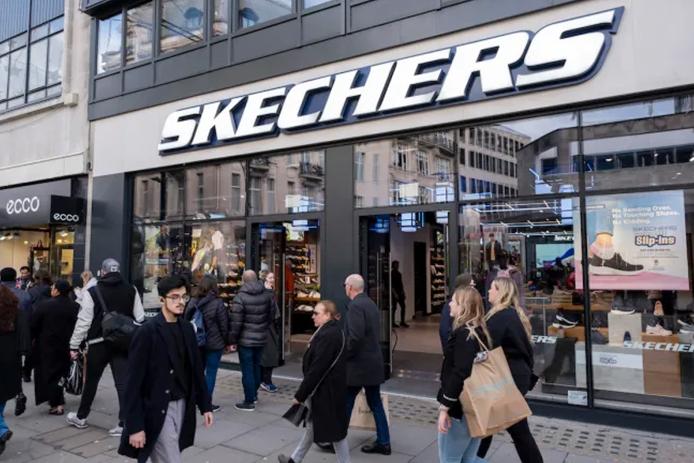What to Expect When Skechers, Deckers and VF Corp. Report Earnings

When retailers and brands begin reporting their results for the fourth quarter this week, analysts and investors will get a final read on footwear players’ holiday performance — and a glimpse into what their growth trajectories will look like in 2024.
Boot Barn, Skechers and Deckers Brands kick off the retail earnings season this week, followed by VF Corp. and Under Armour next week. Several companies, such as Boot Barn, Crocs, Genesco, On and Wolverine Worldwide, announced updated sales and earnings expectations for the quarter earlier this month at the 2024 ICR conference. Overall, these early reads suggested that holiday results were generally in line with expectations and in some cases, better-than-expected.
“While we believe the discretionary environment is improving, January reads likely prove inconclusive on the state of the consumer given tough, promotionally driven compares,” wrote BTIG analyst Janine Stichter in a Thursday note to investors. “Overall, we look forward to a predictable environment in ’24, with better gross margin control.”
Stichter added that she sees the most risk for VF Corp., which in October rolled out a new plan to transform its business that includes revitalizing its struggling Vans brand. The North Face likely also faced challenges in the most recent quarter due to unseasonably warm weather during the fall/winter season this year, Stichter added.
Other analysts were also tepid about VF’s upcoming report.
“There are no indications that Vans will turnaround in the foreseeable future,” Williams Trading analyst Sam Poser said in a note to investors last week. “VFC is in a tenuous situation.”
Meanwhile, analysts were overall more optimistic about Skechers, which is coming off an exceptionally solid 2023.
“Skechers was one of the best stocks in our coverage in 2023 and we believe it’s poised for another strong year in 2024,” wrote Wedbush analyst Tom Nikic in a note to investors earlier this month, explaining how the brand will benefit from retail companies looking to restock inventories later this year. “We believe the brand continues to exhibit solid momentum, there’s a restocking opportunity in the wholesale channel, margins can keep moving higher, and FX trends have turned more favorable.”
Stifel analyst Jim Duffy said he sees the potential for Skechers to experience double-digit revenue growth in 2024, driven by DTC strength and a wholesale rebound in the Americas. He also noted that the comfort footwear brand’s report will be a indicator for the holiday performance of shoe brands in general.
As for Deckers, analysts agree that the company’s standout Hoka and Ugg brands will likely continue to drive success for the shoe conglomerate. (In November, Hoka was honored with the Brand of the Year award at the 37th annual FN Achievement Awards.)
“We believe that Deckers remains one of the strongest fundamental stories in our coverage,” Wedbush’s Nikic said, noting that he expects another beat-and-raise when the company reports results for its third quarter this week. He also added that this holiday quarter is the most important quarter for Deckers, “largely due to the seasonality of the Ugg brand (which generates about half its annual revenues in the quarter).”
“The good news for Deckers is that it seems like both of its major brands, Ugg and Hoka, had strong holiday seasons,” he said.
As for Boot Barn, the company reported earlier this month that net sales in the third quarter of fiscal 2024 were expected to be $520.4 million, up 1.1 percent over the same time last year. Net income per diluted share is expected to be at or above the high end of its previously announced guidance range of $1.79.
Poser said that while Boot Barn has had a strong few years, the company is beginning to show problems related to customer retention and attraction, especially among women.
“We recognize the success Boot Barn has realized over the past 10 years,” Poser wrote in a note earlier this month. “However, fiscal year 2024 is proving to be a lackluster year, and management does not have a line of sight as to when comparable sales will turn positive, and new store productivity is decelerating.”
